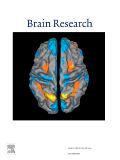
“An acute brain insult can cause a spectrum of primary and secondary pathologies including increased risk for epilepsy, mortality and neurodegeneration.
The endocannabinoid system, involved in protecting the brain against network hyperexcitability and excitotoxicity, is profoundly dysregulated by acute brain insults.
We hypothesize that post-insult dysregulation of the endocannabinoid signaling may contribute to deleterious effects of an acute brain injury and potentiation of endocannabinoid transmission soon after an insult may reduce its pathological outcomes.
Thus, a brief pharmacological stimulation of the endocannabinoid system soon after a brain insult exerts beneficial effects on its pathological outcome though does not prevent epileptogenesis.”


.png)




1098-2744/asset/olalertbanner.jpg?l=SkaBT8QEx2rBLBmQ2URf7fAaMkdr93XX6rZGHTxNciKmUq8irCOtJ8iDpNMUJn%2FA)
